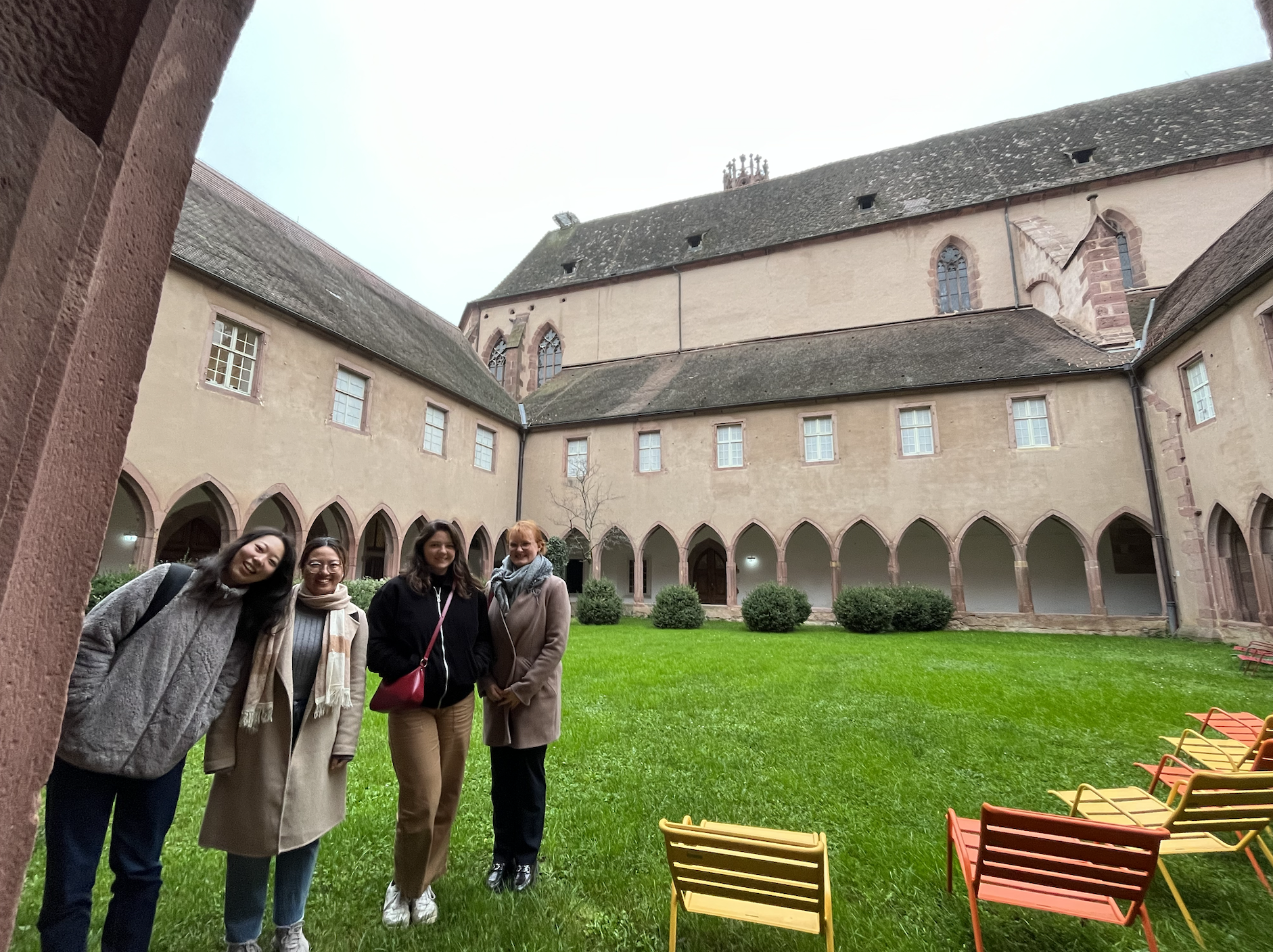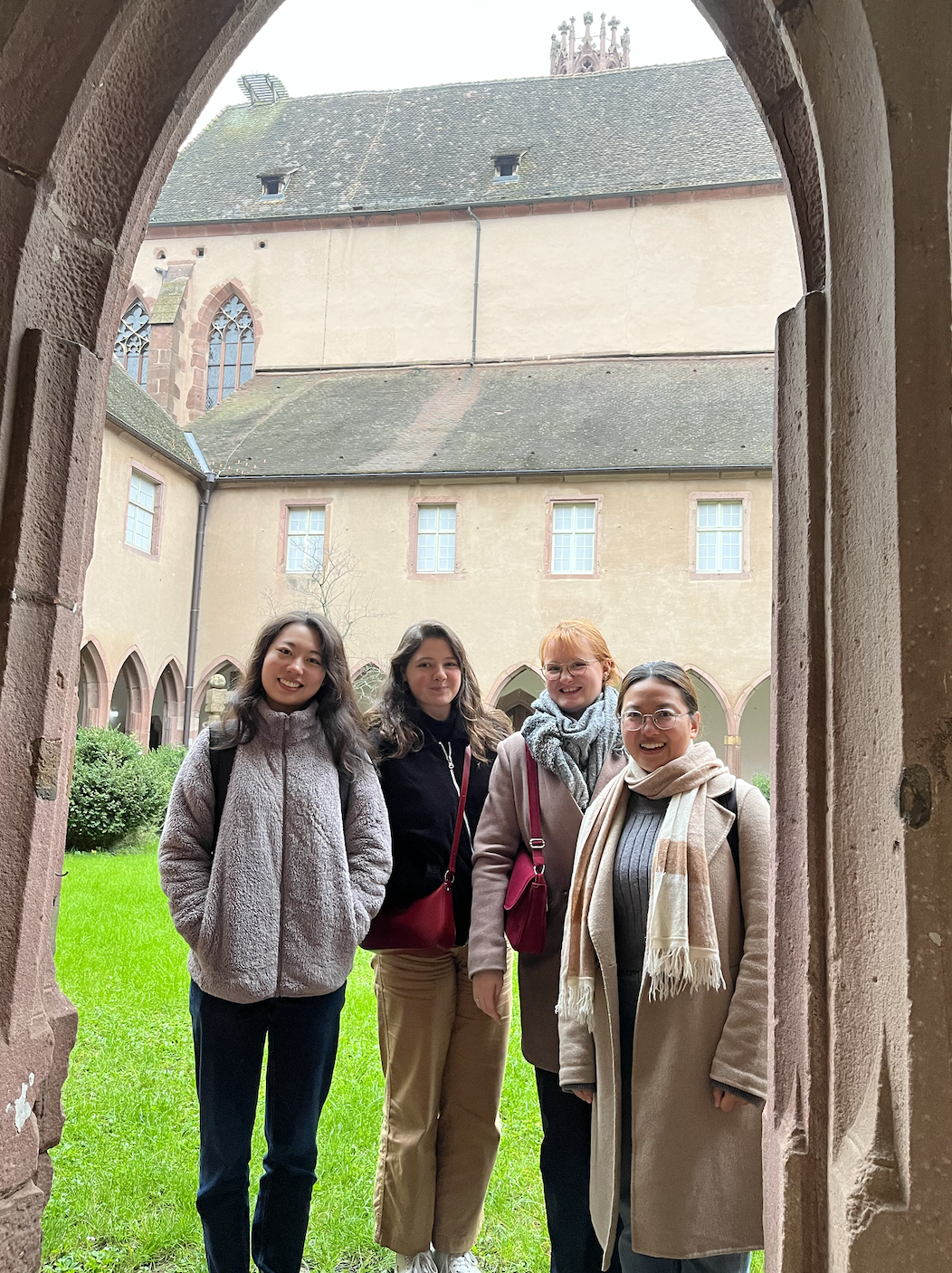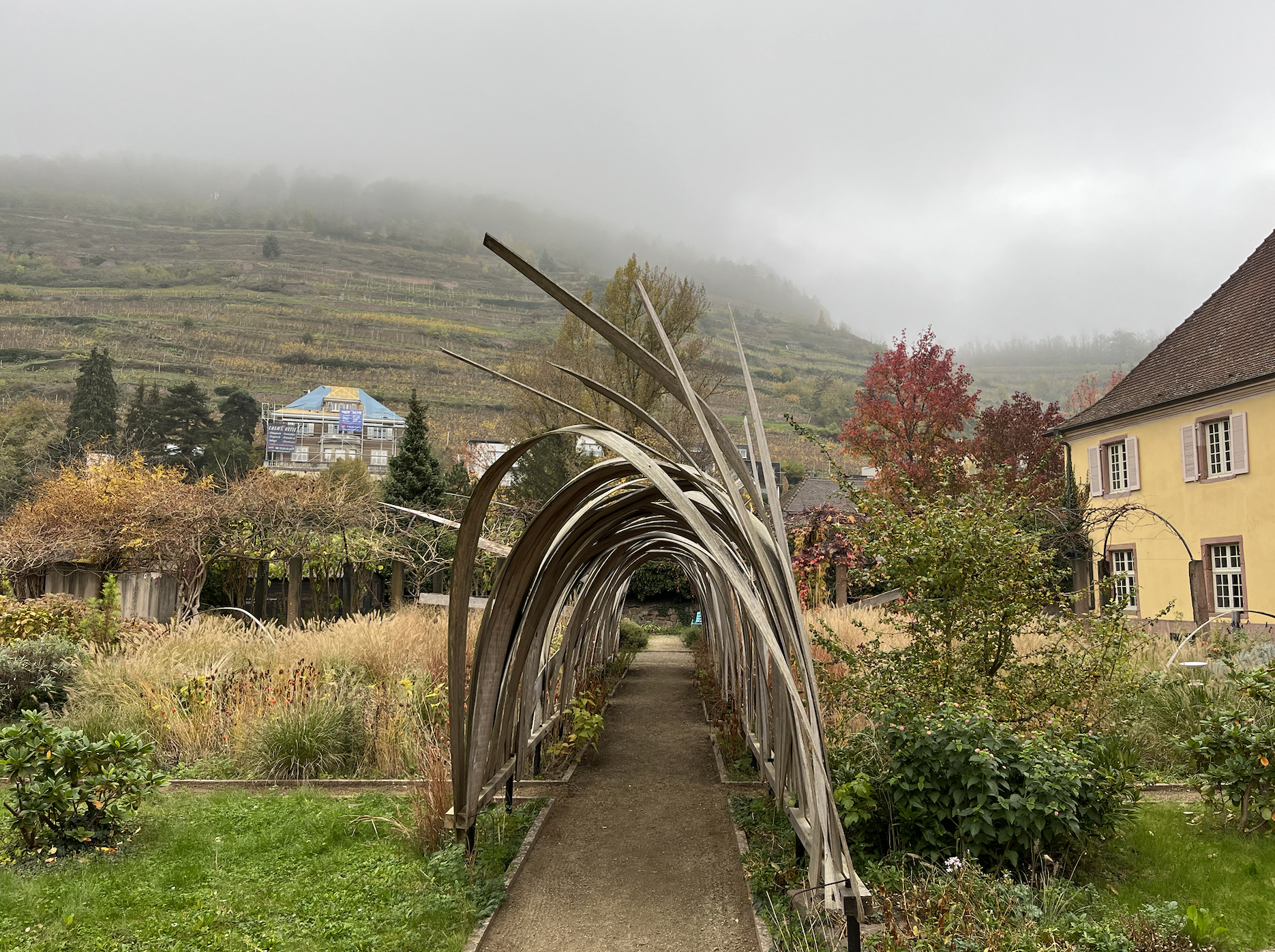As part of its network observation mission, the ACCR approached students in the Master 2 program in Tourism Management and Heritage Development at the Institute for Research and Higher Studies in Tourism (IREST) to conduct an exploratory study on the integration of cultural meeting centers into the tourism dynamics of their region and their identification by stakeholders in the sector. For this initial experiment, Les Dominicains de Haute-Alsace and La Chartreuse de Neuville were the two case studies.
For this study, the students' assessment was divided into several stages: consultation of resources provided by the centers and the ACCR, independent research to understand and map out the field and the actors involved, drawing up a list of people to meet and interview grids before conducting the interviews and analyzing the transcripts, a week-long field trip for immersion, comparisons with existing and similar models to draw inspiration and better understand the site through a mirror effect, suggestions for improvements or avenues to explore, etc. For each CCR, the students carried out personalized work responding to issues identified in consultation with the teams on site.
Beyond the CCR's observatory role, this project also reflects a commitment that is dear to the ACCR, namely to support future cultural professionals in their training.
Focus on Les Dominicains de Haute-Alsace /
Below are excerpts from the report produced by Diane Fruchard, Alessia Ciol, Jiaqi Chen, and Mengmeng Li. The students focused their work on three issues:
- Improve the attractiveness of Les Dominicains as a heritage site and strengthen the dissemination of its cultural and historical values in order to use these qualities as a tourist attraction.
- Improving access to Les Dominicains in order to resolve visitor mobility issues and encourage them to stay longer to enjoy the different aspects of the town, thereby creating synergy within Guebwiller.
- Strengthen cooperation with local cultural and tourist institutions, promote interregional collaboration, share resources, and carry out joint promotional campaigns to improve the visitor experience and distribute tourist flows.
/ Identification & cooperation
Through numerous interviews with local tourism stakeholders, the students were able to gather impressions of the Dominicans of Haute-Alsace and the tourism dynamics specific to the area, enabling them to adjust their recommendations.
"Les Dominicains de Haute-Alsace is a former convent governed by the Rule of Saint Dominic. According to Noémie Metzinger of the ADT, the Dominicans convey a message of transmission and education. They are one of the major sites in Alsace with a rich and diverse program. This is a real asset for them. For her, the fact that they have been awarded the CCR label is a huge opportunity, as the ACCR is a network with good communication skills and a good reputation. In addition, the CCR label gives the Dominicans great freedom to experiment with innovative cultural formats."
"The importance of having a CCR is mentioned several times, particularly in the region, which makes it more attractive. Coupled with the existence of a CIAP, a museum (the Théodore Deck Museum in Guebwiller), a Pays d'Art et d'Histoire label, and its proximity to the Vosges mountains and, more specifically, the Grand Ballon, the region is becoming very attractive to a wide range of tourists."
“The Community of Communes recognizes how lucky the area is to have so many things: a CIAP, a Pays d'Art et d'Histoire label, a museum (Théodore Deck), a CCR (the Dominicans), and natural beauty that's easy to get to on foot or by bike.”
”The Guebwiller tourist office explains that the three pillars of the tourism strategy are heritage, wine culture, and green tourism. “
”The Dominicans collaborate with local cultural institutions such as the Pays d'Art et d'Histoire, the Théodore Deck Museum, and the European Institute of Ceramic Arts. However, these collaborations focus mainly on one-off projects, with no real long-term strategic planning or integration of resources. Furthermore, the audiences for the various cultural activities organized in Guebwiller often lack cross-cutting appeal, which limits the synergies between institutions. Each cultural activity seems to attract a specific audience, with little interaction between these different groups."
/ Suggestions for avenues to explore
In light of the issues specific to the areas identified by the students and the actions already taken by the CCR, the group put forward two suggestions for projects that the CCR could lead in order to strengthen cooperation between local actors, promote its built heritage, continue its engagement with young people, and address the city's accessibility issues.
Each project was the result of creative and detailed thinking, with attention to detail at every stage: the pre-project, project and post-project phases were explained in detail.
"The first recommendation is called the Cyclo'Balade. It allows cycling enthusiasts to discover the local heritage, in particular emblematic sites such as the Dominicans of Haute-Alsace. This project requires cooperation between stakeholders, which facilitates exchanges for other projects. The cycle route project around Guebwiller and the Dominicans of Haute-Alsace aims to address issues related to tourist accessibility, sustainable development, and the promotion of local cultural heritage. By using bicycles as the main means of transport, this project promotes soft and environmentally friendly mobility while enhancing the region's tourist appeal. This project thus meets several objectives: to enhance the visibility and attractiveness of the Dominicans by promoting their heritage, to encourage local participation and collaboration, to promote local trade, to strengthen synergies between different actors (Neuenbourg Castle, Dominicans of Haute-Alsace, Théodore Deck Museum, Tourist Office), to develop innovative projects, etc. “
”The second recommendation is entitled ‘Inter-high school artistic dinner’. The project aims to strengthen ties between high schools in Guebwiller and the Dominicans of Haute-Alsace through the organization of artistic events and live performances. This partnership is part of a desire to create a lasting collaboration that will highlight the importance of local culture and the involvement of young people in the arts.
One of the main goals of this project is to offer students practical and educational experience by giving them the opportunity to actively participate in the organization of performances. Whether in logistics, artistic entertainment, catering, or communication, students will have the opportunity to work on various aspects of event planning. This project provides real-life training that will enable them to develop valuable skills in fields as diverse as live performance, event organization, and audience management. One of the main objectives of this collaboration is also to attract a younger audience to the Dominicans' shows.
The artistic projects should be mainly related to history, heritage, or contemporary issues. For example, themes such as “Alsace through the ages,” “Nature and music,” or “Dialogue between tradition and modernity” could be explored. This thematic renewal will not only maintain the interest of regular audiences, but also attract new audiences. In addition, this adaptability to societal changes will enable Les Dominicains to incorporate inspiration from contemporary developments into their artistic creations.
The project may include traditional Alsatian artistic elements, such as Alsatian theater, folk dances, or traditional music, while integrating contemporary forms such as digital projection, light interactions, or interdisciplinary collaborations between music, dance, and contemporary visual arts with a menu in keeping with the chosen theme and a focus on local cuisine."



